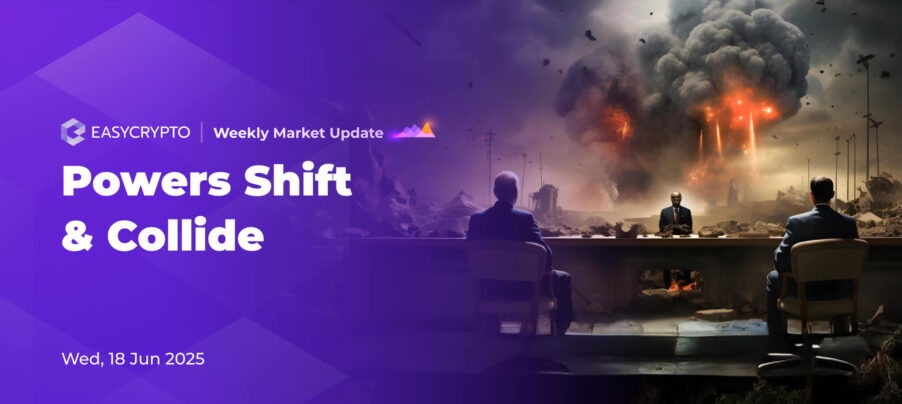The FTX and Silicon Valley Bank failures have more in common than you think
The failure of FTX and Silicon Valley Bank (SVB) both involved investors seeking to withdraw billions of dollars after realising the exchange or bank were on shaky grounds. Many often think that this is where the parallel ends.


In reality, there are some important similarities between these failures. Critically, there are also lessons to glean around who we put our financial trust in, the importance of transparency, and the potential of cryptocurrency (crypto) to solve for both of these.
Keep reading for an outline of how the recent failures weren’t dissimilar; and what we can learn.
Regulation isn’t enough to prevent the failures
In an industry in which ‘size matters’ and usually equates to trust or stability, these two institutions had it in spades. The former was the third-largest cryptocurrency exchange by volume and had over one million users. The latter is the 16th largest bank in the United States. Yet that wasn’t enough to prevent their downfall.
The collapse of SVB happened for multiple reasons, including a lack of diversification and a classic ‘bank run’ in which multiple customers withdraw their deposits due to fears around the bank’s solvency.
While SVB’s risk levels were transparent due to regulation, the Boston Globe makes a very salient point: “In the wake of the Silicon Valley Bank collapse, banks must get a lot better at transparency, and social media.”
The publication explained the bank run, in an era that is hyper-digital, like this: “In an instant, the message that ‘SVB is in trouble! — get out fast!’ went viral and the social media stampede was on. People glanced at Twitter, pulled out their cellphones and transferred millions. It was over for SVB.”
Although it would have been nearly impossible for the overnight meltdown of Silicon Valley to happen even 10 years ago (it would have taken longer for word to spread; and even longer for depositors who wanted to leave to process transactions) – what the event does do is bring into sharp focus the need for ‘hyper transparency’ from banks.
Consumers don’t want to guess how safe their money is; and as the last month has shown, when they are forced to guess, they’ll panic — placing a bank at risk of failure.
Transparency could have stopped FTX’s fraud
The collapse of FTX, on other hand, was sparked by a CoinDesk article that leaked the exchange’s balance sheet; as well as Binance announcing it would sell the exchange’s tokens (FTT) because of mishandled and blurred funds.
The value of the tokens dropped, prompting customers to withdraw money from their accounts and after subsequent investigation, revealing a rabbit warren of fraud and mismanagement which was largely ‘invisible’ due to the fact that exchange wasn’t subject to regulatory scrutiny at all. ‘Honesty’ in this case came from the media only.
Both were very different failures; however both reveal the need for greater transparency in the operations of financial institutions and exchanges. More pointedly, it has become obvious, too, that regulation alone is not enough to prevent similar failures in the future.
Trust in the mechanism; not in the entity
The failures of both SVB and FTX demonstrate that trust should never be about ‘who’ to put our trust in (an exchange; or a bank, whether unregulated or regulated), but rather ‘what’ (a mechanism; or method).
When it comes to transparency, the blockchain (a public record keeping system that all cryptocurrencies run on) is the ‘gold standard’. The blockchain is transparent and immutable, meaning that all transactions are recorded on a public ledger that cannot be altered. Users can trust that their transactions are secure and that they will not be subject to fraud or manipulation. There’s no ‘guessing’; and the blockchain doesn’t stop trading when speculation mounts.
Not ‘regulated’; or ‘unregulated’; but rather, ‘self-regulated’
Additionally, the blockchain is a decentralised system, meaning that it does not rely on any centralised entity or individual to operate (such as a bank or exchange). Unlike SVB and FTX, there is no single point of failure and the system is less susceptible to attack. (During the FTX freeze, MakerDAO, Compound and others all worked — processing every trade and withdrawal because it is impossible for them to defraud anyone.)
Using your own digital wallet it’s possible to transact autonomously – meaning you don’t need to rely on a regulated or unregulated authority. You and only you are in charge of your crypto and fiat (conventional currency) at all times.
Which begs the question – when it comes to finance, is the blockchain the answer to some of our biggest banking woes?
Nasdaq.com put it quite well late last week in a piece on Bitcoin being a “Clear winner in the U.S. banking crisis”, drawing a parallel between SVB’s failure and an increase in the price of Bitcoin. “Uncertainty is never cause for celebration because of its potential negative consequences on people’s lives. But for the time being, bitcoin, with its fixed issuance at a time of monetary expansion, looks like a way to opt out of this most recent crisis.”
Share to
Stay curious and informed
Your info will be handled according to our Privacy Policy.
Make sure to follow our Twitter, Instagram, and YouTube channel to stay up-to-date with Easy Crypto!
Also, don’t forget to subscribe to our monthly newsletter to have the latest crypto insights, news, and updates delivered to our inbox.
Disclaimer: Information is current as at the date of publication. This is general information only and is not intended to be advice. Crypto is volatile, carries risk and the value can go up and down. Past performance is not an indicator of future returns. Please do your own research.
Last updated April 19, 2023





